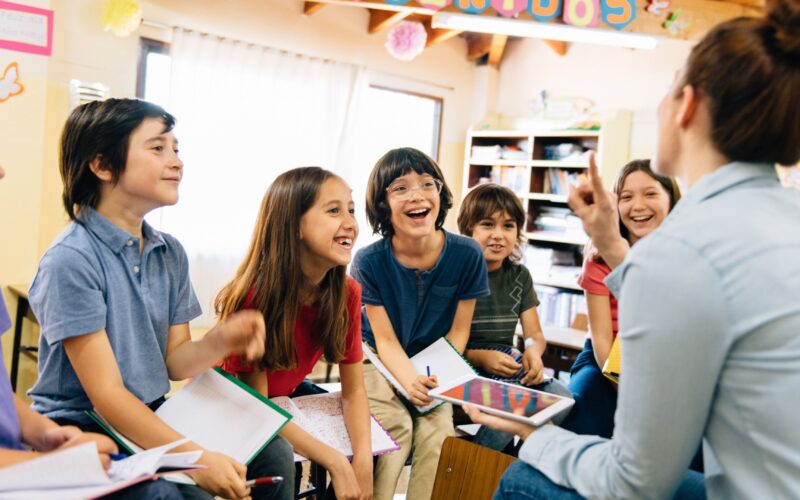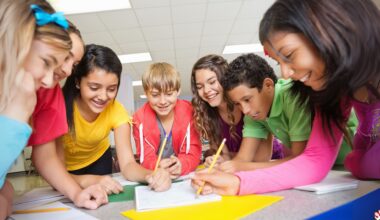In the journey of Social Emotional Learning (SEL), social awareness is a core competency that helps students connect with others in meaningful, respectful, and empathetic ways. It’s more than just being nice—it’s about understanding people’s emotions, perspectives, backgrounds, and needs. When students are socially aware, they can navigate relationships better, contribute to a positive learning environment, and grow into compassionate, inclusive adults.
In this blog, we’ll explore the role of social awareness in SEL, break down its essential subskills—perspective-taking, empathy, respect for others, and appreciation of diversity—and provide practical, classroom-ready strategies to foster these in students.
What Is Social Awareness in SEL?
Social awareness refers to the ability to recognize and understand the feelings and perspectives of others, including people from diverse backgrounds. According to CASEL, it involves:
- Empathy
- Perspective-taking
- Recognizing social cues and norms
- Appreciating diversity
- Demonstrating respect
Incorporating social awareness into SEL isn’t just an educational priority—it’s a life skill that lays the foundation for inclusive communities and healthy relationships.
Why Social Awareness Matters
Social awareness is essential for emotional intelligence. It supports students in building stronger friendships, reducing conflict, and engaging in teamwork. Children and teens with strong social awareness can:
- Work well in groups
- Recognize and manage peer pressure
- Express concern for others
- Demonstrate kindness and fairness
From the classroom to the workplace, these skills foster understanding and cooperation.
Exploring the Four Core Subskills of Social Awareness
Let’s take a closer look at how each subskill of social awareness contributes to Social Emotional Learning—and how educators can bring them to life in the classroom.
1. Perspective-Taking: Seeing Through Another’s Eyes
What it is: Perspective-taking is the ability to understand someone else’s thoughts, feelings, and point of view.
Why it matters: This skill helps students respond with empathy, adjust their behavior in social situations, and navigate differences with compassion.
In practice:
- Primary example: A student understands a peer’s frustration during group work and offers help.
- Secondary example: A high schooler recognizes their teacher’s stress and chooses to act respectfully during class.
Classroom activities:
- Organize virtual exchanges with students from other schools or countries.
- Use literature to explore characters’ motivations and viewpoints.
- Run classroom discussions or role-playing activities where students explore different sides of a story or issue.
Reflection prompt:
When was the last time you changed your mind after considering someone else’s perspective?
2. Empathy: Feeling With, Not Just For
What it is: Empathy is the ability to emotionally understand what someone else is going through.
Why it matters: Empathy helps students become better listeners, more supportive friends, and more compassionate citizens.
In practice:
- Primary example: A child comforts a classmate who’s having a tough day.
- Secondary example: A student listens to a peer who’s feeling anxious and offers kind words or support.
Classroom activities:
- Hold storytelling circles where students share personal experiences.
- Use reflective journaling after discussing emotional or social topics.
- Introduce empathy-based games that simulate real-life challenges.
Reflection prompt:
How does it feel when someone truly listens to you? How can you do that for someone else today?
3. Appreciation of Diversity: Celebrating What Makes Us Different
What it is: Appreciation of diversity involves recognizing, valuing, and respecting the differences that make each person unique—culture, background, identity, and experiences.
Why it matters: When students value diversity, they contribute to inclusive, respectful environments where everyone feels welcome and valued.
In practice:
- Primary example: A student is excited to learn about a classmate’s cultural tradition and asks thoughtful questions.
- Secondary example: A teen defends a peer facing discrimination and advocates for inclusion.
Classroom activities:
- Celebrate heritage months with student-led projects.
- Diversify reading materials to reflect multiple cultures and identities.
- Create projects that explore global challenges through different cultural lenses.
Reflection prompt:
What’s one thing you’ve learned from someone who has a different background than you?
4. Respect for Others: Building a Foundation of Kindness
What it is: Respect for others means treating people with kindness, fairness, and dignity, regardless of differences.
Why it matters: Respect promotes safety, trust, and cooperation in schools and beyond.
In practice:
- Primary example: A student shares classroom supplies without being asked.
- Secondary example: A teen disagrees in a discussion but listens without interrupting.
Classroom activities:
- Establish classroom norms that emphasize respect, empathy, and fairness.
- Create a “kindness wall” where students write or draw acts of respect they’ve experienced or witnessed.
- Start “respect check-ins” where students reflect on how they’ve shown respect recently.
Reflection prompt:
When you feel respected, how does it change the way you act or speak?
Integrating Social Awareness Into the Classroom
Here are some practical strategies to make social awareness part of everyday classroom life:
- Morning meetings or circles to set a tone of care and mutual respect
- Collaborative projects that require students to share, listen, and problem-solve together
- Restorative conversations to resolve conflicts through reflection and empathy
- Student leadership opportunities that encourage responsibility and decision-making
- Mindfulness and self-awareness activities to help students understand how their emotions influence interactions with others
The goal isn’t to check a box—it’s to create a learning culture where every student feels seen, heard, and valued.
SEL in Action: Stories and Examples
Think about public figures who embody social awareness—like Oprah Winfrey, whose philanthropy and compassion are widely known. Or fictional characters like Atticus Finch from To Kill a Mockingbird, who demonstrates empathy and respect even in the face of injustice. These real and imagined role models help students grasp the impact social awareness can have on personal and societal levels.
Conclusion: A Call to Connection
Social Emotional Learning isn’t just a trend—it’s a critical part of helping students succeed in school and in life. Social awareness, with its blend of empathy, perspective, respect, and appreciation of diversity, is the heart of that mission.
By nurturing these skills, educators don’t just teach—they transform. A student who learns to understand others will grow into an adult who can collaborate, lead, and make a difference.
Let’s keep asking questions, sharing stories, and building classrooms where empathy is second nature and respect is the rule. Because when students feel connected to others, they’re not just more confident—they’re more human.


